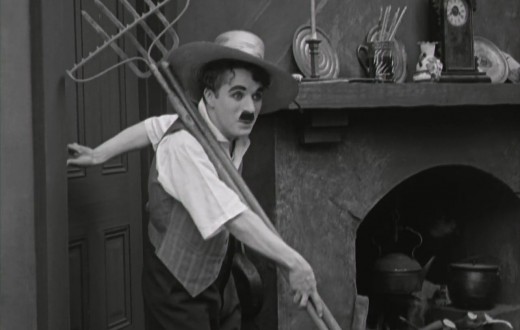Effective communication between a director and actors is an essential cornerstone of theatrical and cinematic art. This dynamic interplay not only shapes the portrayal of characters and the narrative arc of the production but also fosters a collaborative environment where creativity can flourish. Directors use specific terminology to convey their vision, provide guidance, and evoke the desired emotional and physical responses from actors. Understanding these terms is crucial for everyone involved in the production, not just for the sake of clarity and efficiency, but also to ensure that the creative process is harmonious and productive. It’s a language that transcends mere words, encapsulating the essence of storytelling, emotion, and artistic expression. Whether one is an actor, director, or even a member of the audience, knowledge of these terms enhances the appreciation of the art form and deepens the understanding of the intricate processes that transform ideas into compelling performances.
Here is a short list of common words and phrases that are often used in director-actor communications, along with brief explanations:
- Action: Used to indicate the start of a scene or sequence.
- Cut: Stops the action or scene.
- Blocking: Discussing or setting the actors’ movement and positions.
- Motivation: Explaining the reason behind a character’s actions or dialogue.
- Intensity: Adjusting the level of emotion or energy in a performance.
- Focus: Directing the actor’s attention or gaze.
- Beat: A slight pause for emphasis or to separate thoughts/actions.
- Tone: The general mood or attitude of a scene or line.
- Pace: The speed at which a scene or dialogue progresses.
- Projection: Encouraging louder and clearer speech.
- Cue: Signaling when an actor should start their action or dialogue.
- Character: Discussing the nature or personality of the role.
- Energy: The level of vigor or dynamism required in a performance.
- Mark: Designated position for an actor.
- Emotion: The feeling that should be conveyed in a performance.
- Contrast: Changing dynamics to create interest or tension.
- Subtext: The underlying meaning behind the dialogue or action.
- Timing: The precise moment for an action or line.
- Transition: Changing from one scene, mood, or pace to another.
- Improvisation: Encouraging spontaneous, unscripted acting.
- Chemistry: The interaction and relationship between actors.
- Dynamic: The varying intensity and pacing in a performance.
- Feedback: Offering constructive criticism and suggestions.
- Nuance: The subtle aspects of a performance.
- Context: The surrounding circumstances or background of a scene.
- Commit: Fully embracing and performing a role or action.
- Concentration: Maintaining focus and presence.
- Breath: Using breathing to control pacing, emotion, and projection.
- Balance: Maintaining an even distribution in stage presence.
- Eye Contact: Directing where to look or focus.
- Gesture: The use of body movements to convey emotion or action.
- Intensity: The strength or depth of performance.
- Listen: Reacting to and engaging with other actors.
- Moment: A significant or poignant part of a scene.
- Natural: Keeping the performance realistic and believable.
- Pause: A temporary stop in dialogue or action for effect.
- Pitch: The highness or lowness of the actor’s voice.
- Rhythm: The flow and pattern of movement and speech.
- Stance: The posture or position of an actor.
- Volume: The loudness or softness of an actor’s voice.
- Accent: The style or pronunciation of speech.
- Adapt: Adjusting the performance to directorial feedback.
- Articulation: The clarity of speech in delivering lines.
- Build: Gradually increasing tension or pace.
- Characterization: Portraying the traits of the character.
- Clarity: The clearness of intention or expression.
- Connection: Developing a relationship or link with another character.
- Consistency: Maintaining a steady portrayal of the character.
- Depth: The complexity and layers in the performance.
- Direct: A specific instruction for action or delivery.
- Discover: Finding new aspects or moments in the performance.
- Ease: Relaxing into the role or scene.
- Engage: Involving oneself fully in the action or dialogue.
- Express: Showing emotion or conveying an idea.
- Feel: To internalize and convey emotions authentically.
- Flexibility: Being adaptable in performance.
- Flow: The smooth progression of the scene or dialogue.
- Guide: Directing the actor’s interpretation or movement.
- Harmony: Achieving a balanced interaction with other actors.
- Highlight: Emphasizing a particular moment or line.
- Immerse: Completely involving oneself in the role.
- Instinct: Encouraging natural, intuitive reactions.
- Layer: Adding depth and complexity to the character.
- Lead: Taking charge of a scene or interaction.
- Meld: Combining different elements of performance seamlessly.
- Mood: The overall feeling or atmosphere.
- Narrative: The story or plot line.
- Objective: The character’s goal or aim in a scene.
- Perspective: The character’s viewpoint or attitude.
- Playfulness: Bringing a sense of fun or lightness to the role.
- Precision: The accuracy and exactness of movement or delivery.
- Preparation: Getting ready for a scene or action.
- Presence: Commanding attention and being in the moment.
- React: Responding to other characters or situations.
- Realism: Bringing a sense of authenticity to the performance.
- Refine: Improving or polishing the performance.
- Relax: Reducing tension or stiffness in performance.
- Reveal: Showing or uncovering an aspect of the character.
- Revise: Making changes or adjustments to the performance.
- Rough: A preliminary attempt at a scene or action.
- Sensitivity: Reacting with appropriate emotion or subtlety.
- Shape: Forming or molding the character or scene.
- Shift: Changing direction or focus in a scene.
- Simplify: Making the performance more straightforward or less complex.
- Spontaneity: Acting with a natural, unscripted manner.
- Staging: The arrangement and movement on stage.
- Strength: Exhibiting power or confidence in performance.
- Support: Working with other actors to enhance the scene.
- Sustain: Maintaining energy or focus over a period.
- Tactile: Using touch or physical interaction.
- Texture: The feel or quality of the performance.
- Timing: The control of pace and rhythm.
- Tone down: Reducing the intensity or drama.
- Underline: Emphasizing a particular point or emotion.
- Vary: Changing aspects of the performance to add interest.
- Visualization: Picturing the scene or action mentally.
- Voice: The use of vocal qualities to convey character.
- Weight: The significance or seriousness given to a moment.
- Wholeness: The completeness and cohesion of the performance.
- Zone: Being fully immersed and focused in the character or scene.
These terms are central to the communication between directors and actors, focusing on various aspects like emotional depth, physicality, technical execution, and overall performance quality. They help shape the actor’s understanding and portrayal of the character and the story.







